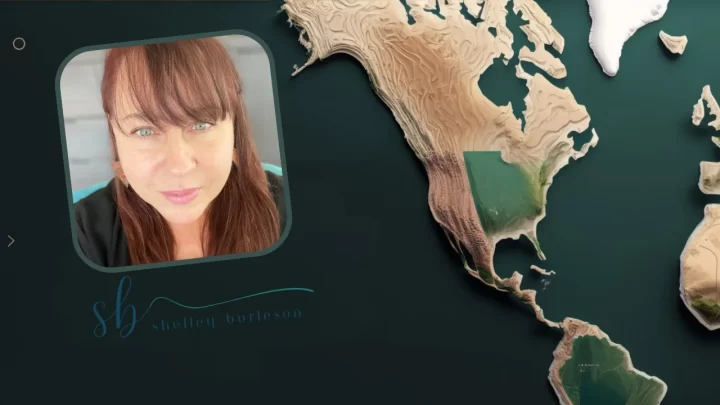This post may contain Amazon affiliate links which means, as an Amazon Associate, I may receive a small commission from purchases made through these links at no cost to you. I only recommend products I have personally used. To learn more, please see my privacy policy page.
Human geography studies the relationship between people and their environments. It examines how cultural, political, and economic activities shape and are influenced by places, regions, and landscapes.
Key Words
- cultural geography
- economic geography
- geography
- political geography
- regional geography
- urban geography
But our journey doesn’t stop there. Continue reading to delve deeper into the branches, key concepts, and real-world applications that define this essential discipline. Join me in discovering the world through the lens of human geography. Read on…
Human geography is far more than just a list of locations on a map. It is a vibrant and diverse field that studies the relationships between people and the environments they inhabit. Think of it as exploring the ‘human side’ of the world, shedding light on how human beings, cultures, economies, histories, and societies shape, and are shaped by, the spaces and places they occupy. Still wondering what exactly is geography though? – take a look at another article I wrote.

More than just Maps
While maps are essential tools in this field, human geography goes beyond cartography. It delves into topics like migration, urbanization, economic patterns, cultural practices, and political movements. It’s about understanding the ‘why’ behind the ‘where’. Why do people move? Why are cities built in a certain way? Why do some areas have more resources than others? Human geographers seek to answer these kinds of questions.
A Living, Breathing Subject
Human geography is not a static field; in social sciences, it’s dynamic and continually evolving. As the world changes—through technology, migration, climate change, and more—so does the focus of geographers. They are on the front lines of interpreting and analyzing the shifting landscapes of our interconnected world.
Why It Matters to You:
Whether you are aware of it or not, human geography affects your life. It influences everything from the layout of your city, the products in your local store, to broader issues like international conflicts or the impacts of climate change. It’s a field that helps us make sense of our world in a deeply interconnected age.
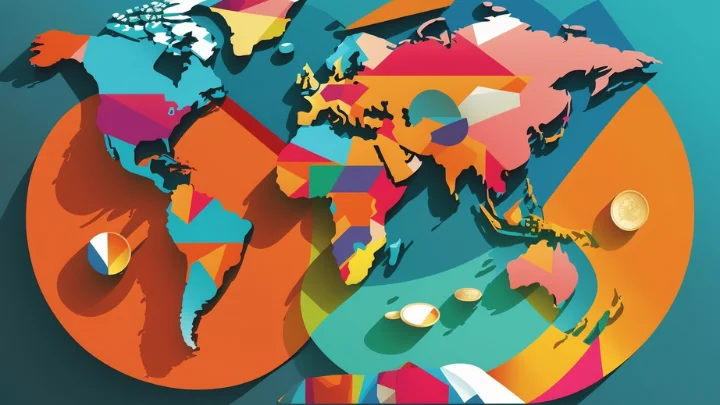
Defining Human Geography
Human geography is a fascinating branch of geography that explores the complex relationships between people and the environments they inhabit. It investigates how cultures, economies, history, and societies shape, and are shaped by, spaces and places, from bustling urban centers to remote rural landscapes.
An Historical Compass
The roots of human geography can be traced back to ancient civilizations, where scholars and explorers sought to understand the world and its inhabitants. In the 19th century and the early 20th century, it emerged as a distinct academic discipline, responding to the needs of expanding colonial empires and later, nation-states. Today, it is a dynamic and diverse field, continually evolving to interpret and analyze our rapidly changing world.
Not Just Mountains and Rivers
At this point, you might wonder, ‘Isn’t geography all about maps and mountains?’ That’s where the distinction between human geography and physical geography comes in. While physical geography focuses on the natural environment (think climate, landforms, and ecosystems), human geography zooms in on the human side of the picture. It’s about understanding why a city was built in a particular location, how migration patterns shape nations, and the way cultural practices are distributed across space. It’s less about the ‘where’ and more about the ‘why’ and ‘how.’
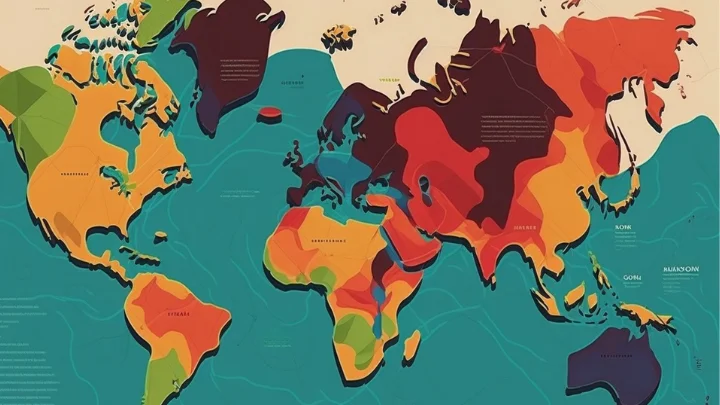
The Diverse Landscape of Human Geography
Human geography is a wide-ranging field, composed of several key branches, or sub-disciplines of human geography. Some of these branches include:
Cultural geography: This is a subfield of human geography that explores the complex interactions between people and the spaces they inhabit. It delves into the ways that human cultures—our languages, beliefs, norms, and practices—are both shaped by and help to shape the world around us. From the colorful festivals that transform city streets into stages of celebration, to the sacred landscapes that inspire spiritual connection, cultural geographers investigate human life as it is woven into place. They examine phenomena such as identity, migration, and globalization, tracing how cultures move, mix, and evolve across the globe. In doing so, cultural geography provides a nuanced view helping us to better understand the diverse world in which we live.
Economic geography: A branch of human geography that investigates the spatial aspects of economic activities and the global flow of resources, goods, and services. It seeks to understand why economic activities are located where they are and how they influence, and are influenced by, the broader environment. From bustling urban financial districts to remote rural farming communities, economic geographers explore the intricate networks that connect producers and consumers, employers and workers, and local markets to the global economy. They analyze patterns of trade, development, and inequality, examining the factors that drive the prosperity of certain regions and the struggles of others.
Political geography: A branch of human geography that delves into the spatial dimensions of political processes, institutions, and conflicts. It examines how political power is organized, exercised, and contested across various scales—from nations and states to local communities. Political geographers analyze phenomena such as national borders, the political organization of regions, electoral geographies, and geopolitical strategies. They explore questions like why certain areas are prone to conflict while others remain peaceful, how political decisions affect the landscape, and why national and international political boundaries are drawn and redrawn the way they are. In a world of evolving political landscapes and emerging challenges to territorial sovereignty, political geography offers critical insights into the relationship between people, power, and place.
Urban geography: A subfield of human geography that focuses on the spatial structures and processes of cities and urban areas. It delves into the dynamics that shape the world’s increasingly urbanized populations, exploring how cities are designed, how they grow, and how people live within them. From the bustling streets of megacities to the intimate corners of small towns, urban geographers examine the patterns of migration, land use, housing, and social inequality that define urban life. They investigate the challenges of urban sprawl, gentrification, and sustainability, seeking solutions that can make cities more livable, equitable, and resilient. In a world where more than half of the population now calls an urban area home, this branch offers clues to the complex and rapidly evolving landscapes of our cities.
Health geography: A branch of human geography that explores the intricate relationships between health, healthcare systems, and the environments in which people live. This field investigates how location and socio-economic conditions impact people’s health, well-being, and access to healthcare services. From the patterns of disease outbreaks in rural villages to the distribution of hospitals in sprawling cities, health geographers unravel the complexities of health disparities and the factors contributing to the varying health statuses of different populations. They study the spatial aspects of health issues, such as how environmental pollutants affect communities or how urban design can promote physical activity and mental well-being. In a world facing diverse health challenges, from pandemics to chronic diseases, health geography provides critical insights that guide public health interventions and policy, aiming to create healthier, more equitable landscapes for all.
These are but a few of the branches of human geography offering a glimpse of the complex relationships between people and the places they inhabit. From the cultural diversity that enriches our communities, to the political forces that shape our world, and the health challenges that are intrinsically tied to our environments—geographers work to decode these patterns. It is a field that is as vast as the world it seeks to understand, continually evolving to address new questions and challenges.
Mapping the Human Story
In essence, human geography is about mapping the story of humanity’s relationship with the Earth. It is a field that helps us to understand not just where things are, but why they are there, and what that means for the future. It’s a field for the curious, the explorers, the problem-solvers, and anyone who wants to understand the world in a deeper, richer way.
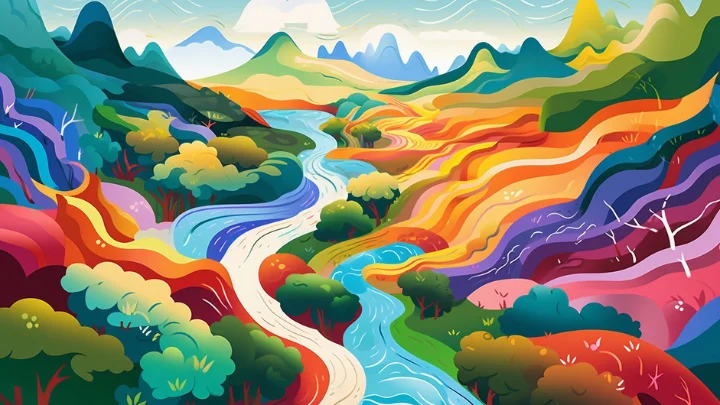
Charting the Paths We Tread
Spatial Perspective: The Power of "Where"
At the core of human geography is the spatial perspective—a focus on ‘where’ things are and ‘why’ they are there. This perspective helps us understand patterns and distributions across Earth’s surface, revealing the broader social and environmental contexts of a specific location. For example, why are cities located where they are, and what effects do they have on surrounding areas? The spatial perspective is not just about physical location, but also about how spaces are connected, how they relate to each other, and how they change over time.
Place and Region: More than just a Name on a Map
Place refers to a specific point on Earth distinguished by a particular character—often imbued with personal or emotional meaning. For instance, your hometown is a ‘place,’ filled with memories, experiences, and a specific cultural landscape. On the other hand, region refers to an area of the Earth’s surface with a degree of similarity that differentiates it from surrounding areas; this can include common governmental, cultural, or physical characteristics. For example, the Sahara is a region defined by its arid climate and distinct ecosystem, while Scandinavia is a region characterized by shared cultural and historical attributes.
Human-Environment Interaction: A Two-Way Street
Human geography also studies how people shape, and are shaped by, their environments. This can range from how urban design influences human behavior and well-being, to how human actions contribute to climate change and environmental degradation. For example, consider the way reforestation projects can renew a landscape and foster community, or how industrial activities can lead to pollution and health crises. This concept reminds us that we are both actors and subjects in our world, continually influencing and being influenced by our surroundings.
Movement and Migration: The Rivers of Humanity and Ideas
The flow of people, goods, and ideas from one place to another is central to understanding contemporary human geography. Migration, whether it be internal (within a country) or international (between countries), shapes cultural landscapes and has significant social, economic, and political impacts. For instance, the Great Migration in the U.S. dramatically reshaped the demographic and cultural makeup of several major cities. Additionally, the globalization of economies means goods and services—and the jobs that produce them—are increasingly moving across borders, with profound effects on people’s lives.
Scale: From the Local Cafe to Global Trade
Scale in human geography refers to the level of representation or analysis, from local to global. At a local scale, geographers might study the layout of a neighborhood, the cultural practices of a small community, regional geography, or the ecology of a river. At a global scale, they might analyze international trade networks, global migration patterns, or the worldwide impacts of climate change. Understanding scale is essential because it helps geographers (and us) to connect individual actions with broader trends, seeing how the local and global are intertwined.
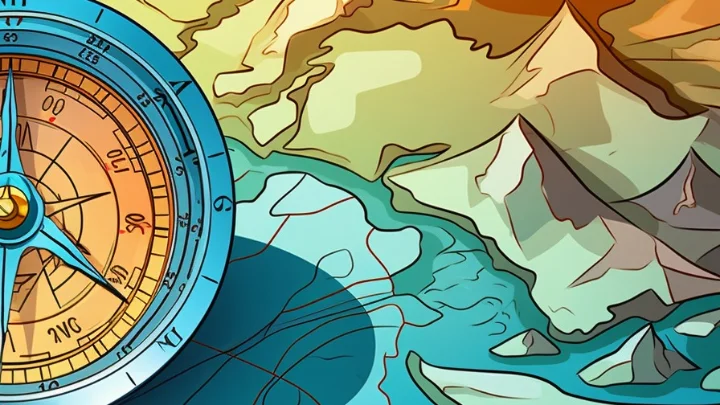
Crafting the Compass: Tools and Methods
Ever wondered how human geographers decipher the complex interactions between people and places? Well, they don’t just rely on instinct; they have an arsenal of tools and methodologies at their disposal. In this section, we’ll explore Geographic Information Systems (GIS), fieldwork, research techniques, and more. Get ready to discover how human geographers craft their compass to navigate the landscapes of human existence.
GIS: The Digital Cartographer's Canvas
In today’s digital age, Geographic Information Systems (GIS) are indispensable to geographers, in general. GIS is a technology that allows geographers to create, manage, analyze, and visualize spatial data on a computer. Think of it as a super-powered mapping tool: it layers various kinds of information—like population density, transportation networks, or climate data—onto maps, enabling a dynamic, in-depth spatial analysis, of spatial relationships. For example, geographic information systems help city planners visualize how a new public transit route might intersect with high-traffic areas, guiding more effective and sustainable urban development.
Fieldwork: The Geography Behind the Map
Fieldwork is the hands-on aspect of geography, where geographers venture into the world to observe and interact with the landscape and people they study. This might involve conducting surveys, taking soil samples, interviewing locals, or photographing urban spaces. For example, a geographer studying migration might travel to border areas to interview migrants and observe conditions. Fieldwork is vital because it grounds geographers’ understanding in real-world observations, enabling them to connect data and theory with human stories and physical landscapes.
Quantitative and Qualitative Analysis: Numbers and Narratives
Human geographers employ both quantitative methods and qualitative research methods in their analyses. Quantitative analysis involves the use of numerical data—like census statistics or climate data—to identify patterns and trends. For instance, using population data to map demographic changes over time. On the other hand, qualitative analysis focuses on non-numerical data, such as interviews, diaries, or photographs, to understand people’s experiences and perceptions. For example, a geographer might use interviews to explore residents’ emotional connections to a gentrifying neighborhood. These two methods often complement each other, painting a fuller picture of human-environment interactions.
Case Studies: Zooming-In to Understand the Big Picture
Case studies are in-depth examinations of specific instances or examples, used to explore broader trends and theories. For a human geographer, this might involve an intensive study of a single city’s response to rising sea levels, or how a rural community adapts to changing agricultural conditions. These focused studies are not isolated; rather, they offer rich, detailed insights that other geographers can then apply to understand similar situations elsewhere. For example, studying how a small town in Brazil became a hub for sustainable energy can offer lessons for other communities around the world aiming to transition to greener practices.
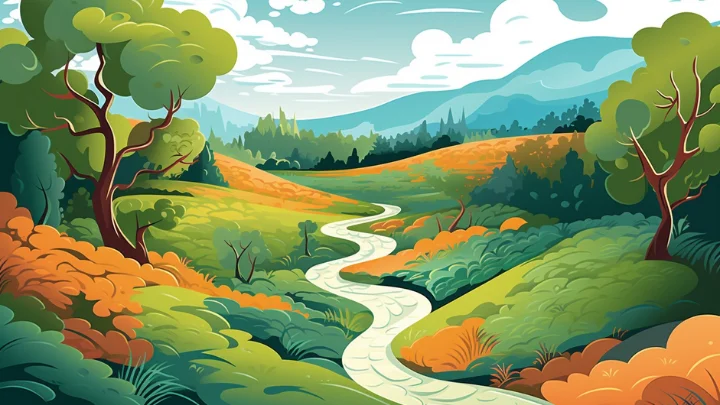
Navigating Today's Complex Challenges
How do we tackle the pressing challenges of our times—from urban sprawl to climate change, and from social inequality to global development? Human geography doesn’t just ask the questions; it offers invaluable solutions. In this section, we’ll look into the real-world applications of human geography that shape policy, guide urban development, and even pave the way for a more sustainable future. Ready to see theory put into practice? Let’s go!
Urban and Regional Planning: Blueprinting Tomorrow's Cities
Geographers play a critical role in the planning and management of our cities and regions. They analyze various factors—like population trends, land use, transportation networks, and cultural spaces—to guide the design of urban areas. For example, a human geographer might work with city officials to plan where new parks should be located, ensuring that they are accessible to communities in need of green spaces. Through this, they contribute to the creation of cities that are not just physically organized but are also livable, equitable, and culturally vibrant.
Environmental Management: Guardians of the Earth
In the realm of sustainability, human geographers are key players. They study how human activities intersect with environmental conditions and use this knowledge to inform conservation efforts. For example, a geographer might analyze the effects of farming practices on soil erosion and water quality, then work with farmers to develop more sustainable methods. In this way, human geographers help bridge the gap between human activity in our communities and the ecosystems we rely upon, guiding efforts to protect and nurture our planet.
Policy and Government: Crafting Compassionate Cartography
Human geography isn’t confined to academia; it has a powerful role in shaping public policy. Geographers’ deep understanding of communities and their spatial contexts makes them invaluable advisors to governments. They might analyze how a proposed policy, such as a new housing development or healthcare service, will affect different communities. For example, during a health crisis, human geographers can help design strategies for equitable healthcare access, using spatial data to identify underserved communities and optimize resource allocation.
Global Development: Bridging the World's Divides
Human geographers also turn their expertise towards tackling global inequality. They analyze patterns of development and underdevelopment, studying why some regions prosper while others struggle. This can involve examining factors like education, healthcare, infrastructure, and economic opportunity across different global contexts. For instance, a human geographer might work with an international organization to understand the factors contributing to rural poverty in a particular country and then help design interventions that address these specific challenges. In doing so, they contribute to global efforts to build a more equitable and prosperous world for all.

Charting a Course in a Changing World
In a world marked by rapid change, how do we make sense of pressing global issues like migration, climate change, and social inequality? The answer lies in human geography, a field that’s more relevant today than ever before. In this section, we’ll explore why understanding human geography is crucial for navigating the complexities of our contemporary world. Are you ready to chart a new course?
Mapping the Terrain of Global Challenges
In an increasingly interconnected world, where climate change, migration, and social inequality are defining issues of our time, the significance of human geography research has never been more pronounced. Human geographers offer critical insights into how global phenomena affect people and places at various scales. For example, they study how climate change is driving migration patterns, leading people to leave their homes due to rising sea levels or intensified natural disasters. They also examine the spatial dimensions of social inequality, shedding light on why certain neighborhoods have lower life expectancy rates and fewer economic opportunities. These studies help us grasp the scope and nature of today’s global challenges.
Problem-Solving from the Ground Up
Human geography is about more than just understanding problems—it’s about finding solutions. Geographers’ intimate knowledge of places and populations equips them with the tools to propose targeted, effective interventions. At the local scale, this might involve working with a community to develop a more sustainable approach to agriculture that preserves the land while also boosting income. On a global scale, human geographers might advise international organizations on how to design development programs that respect and uplift local cultures, rather than imposing one-size-fits-all solutions. In this way, human geography is inherently action-oriented, aimed at crafting real-world solutions that respect the intricate geographies of human life.
Guiding Decision-Making Across Scales
Human geography also plays a pivotal role in decision-making at various levels, from local governments to international organizations. By analyzing complex data about human and environmental patterns, geographers inform policies and strategies that are sensitive to the specific needs and contexts of different areas. For instance, a human geographer might help a city plan its public transportation network so that it better serves neighborhoods that are currently isolated and underserved. At the international level, they might analyze global migration trends to inform compassionate and effective refugee policies.
Your World, Your Move
So, here’s our call to action: delve deeper into the world of physical and human geography. Consider how you engage with your own environment, your own community. Think about the spaces you inhabit and how you might shape them for the better. Let’s navigate and nurture our world together.
Wrap Up...
In a world that is constantly changing and interconnected, human geography stands as a crucial lens through which we can understand our complicated relationships with the spaces we inhabit. As this exploration has revealed, human geography is not merely about maps and locations—it’s about people, places, and the myriad of connections between them.
From the spatial perspective that guides our understanding of ‘where’ and ‘why,’ to the key role of human geographers in urban planning, spatial organization, environmental management, and policy making, this field is deeply embedded in our daily lives and future challenges. It offers actionable solutions to pressing global issues, such as climate change, migration, and social inequality, showing us that the ‘where’ matters, now more than ever.
As we look ahead, human geography offers a beacon of understanding and a toolkit for action. It encourages us not just to observe the world, but to engage with it consciously and effectively.


